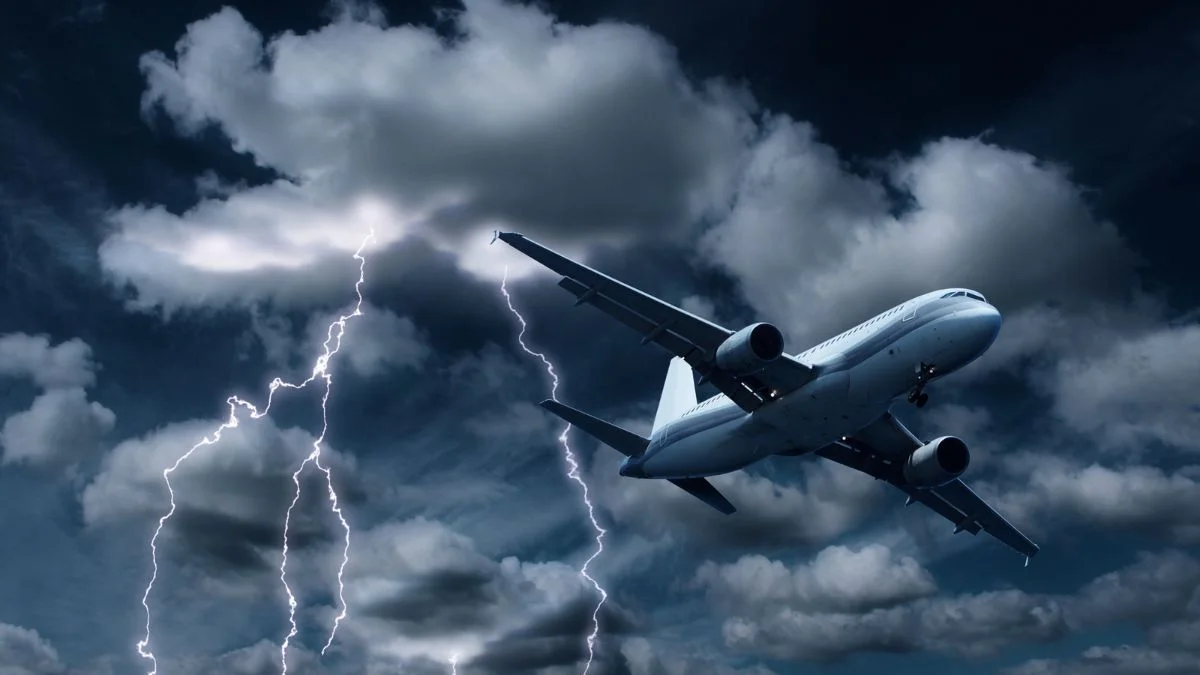Can Turbulence Crash a Plane? Dispelling Myths and Revealing Facts

As participants in Amazon Associates and other programs, we earn from qualifying purchases. This comes at no additional cost to you. For more details, see our Affiliate Disclosure.
Turbulence can be a scary experience when you’re thousands of feet up in the air, and it’s easy to let your imagination run wild. But how much of a threat is it really? In this article, we’ll dive into the facts about turbulence, separating myths from reality, and shedding light on what’s actually happening when your flight gets a bit bumpy.
What is Turbulence?
Turbulence is unexpected air movement that planes encounter while flying. It’s caused by various factors like atmospheric pressure, jet streams, air around mountains, or weather fronts. For passengers, it feels like sudden bumps or sways during the flight. It’s a normal part of flying, not a sign of danger or poor piloting.
Despite being common, turbulence varies in intensity. It can range from light, barely noticeable ripples to more pronounced jolts that might make you grip your seat. But rest assured, pilots and planes are well-equipped to handle it. Pilots receive training to navigate through turbulence safely, ensuring a smoother ride.
Understanding turbulence helps reduce fear. Knowing it’s a regular atmospheric condition and not a threat to the plane’s safety brings peace of mind. Airlines and pilots monitor weather conditions closely, always prioritizing passenger safety. So next time you hit a bumpy patch, remember, it’s just the plane riding the atmospheric waves.
Common Myths About Turbulence
One widespread myth is that turbulence can rip a plane apart. Modern aircraft are designed to withstand even severe turbulence. The construction of planes involves rigorous testing, including the ability to endure extreme stress, far beyond what’s experienced during typical flights. Planes are stronger than the turbulence they might encounter.
Another myth is that turbulence is completely unpredictable and unavoidable. While sudden turbulence can occur, pilots have access to sophisticated weather radar systems that help them anticipate and avoid rough patches. Technology aids in smoother flights, making truly unexpected turbulence rare.
Many believe that the ‘fasten seatbelt’ sign is often an overreaction. However, this precaution is a fundamental safety measure. Turbulence can cause injuries if passengers are moving around the cabin. The sign is there for your safety, not just as a formality. Always heed the seatbelt sign to stay safe.
How Planes Handle Turbulence?
Planes are engineered to handle turbulence with advanced technology and design. The wings and overall structure can flex and absorb the forces encountered in rough air, much like a spring absorbing bumps on a road. This flexibility prevents damage and ensures the plane can ride through turbulence safely.
Pilots play a crucial role in managing turbulence. They’re trained to recognize signs of potential turbulence and adjust their route or altitude to avoid it when possible. Pilots use weather radars to spot turbulent areas ahead and can communicate with air traffic control and other aircraft for real-time updates on atmospheric conditions.
In the cockpit, pilots have strategies for when they encounter turbulence. They might reduce speed to lessen the impact of the bumps, a bit like slowing down on a rough road. This technique, known as ‘riding out the turbulence’, helps make the experience less uncomfortable for everyone on board.
Safety Measures in Place
Airlines have strict safety protocols for turbulence. Crew training ensures that flight attendants know how to secure the cabin and themselves quickly. They’re trained to handle unexpected situations calmly and efficiently, providing clear instructions to passengers.
Aircraft are equipped with seatbelt signs and announcements to remind passengers to stay buckled up when needed. These precautions are not just for show; they’re a critical part of ensuring everyone’s safety during sudden bumps.
Airlines also follow rigorous maintenance schedules to ensure that every part of the plane is in top condition. This includes checks and balances that specifically address the plane’s ability to withstand turbulence. Regular maintenance ensures that the aircraft’s resilience is always up to par.
Tips for Nervous Flyers
If turbulence makes you anxious, choose a seat near the wings. This part of the plane tends to be more stable, with less movement felt. Sitting over the wings can offer a smoother ride.
Deep breathing and relaxation techniques can also help calm your nerves. Focusing on your breath or listening to calming music can distract you from the bumps. Mindfulness can be a powerful tool in managing flight anxiety.
Staying informed about the realities of turbulence can ease your mind. Understanding that turbulence is common and that planes are built to handle it can transform your flying experience. Knowledge is comforting, so learn a bit about how aviation works.
Real Risks vs. Perceived Fears
It’s crucial to differentiate between the actual risks and the fears that turbulence can provoke. Statistically, turbulence is rarely a direct cause of serious accidents. The real risk is quite low, especially when compared to other travel-related hazards.
Injuries related to turbulence usually occur when passengers are not wearing their seatbelts during bumpy periods. These incidents, while unfortunate, are preventable with simple precautions. Wearing your seatbelt whenever seated is the best way to stay safe.
The fear of turbulence is often worse than the experience itself. Familiarizing yourself with the facts and trusting in the safety measures and the professionals in charge can help you feel more at ease. Remember, flying is one of the safest modes of transportation available.






